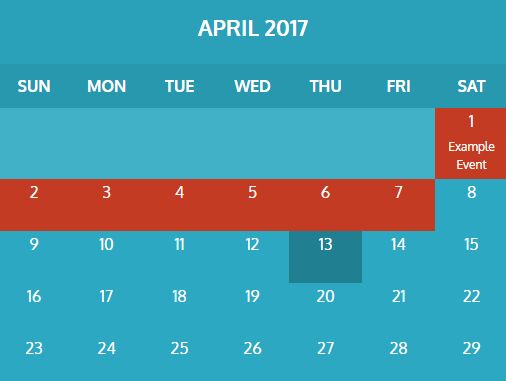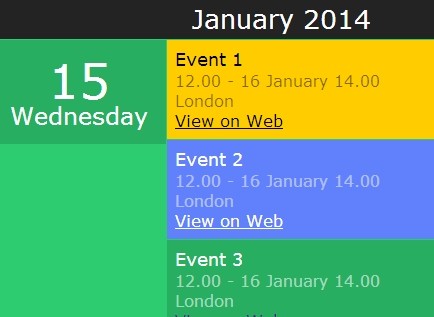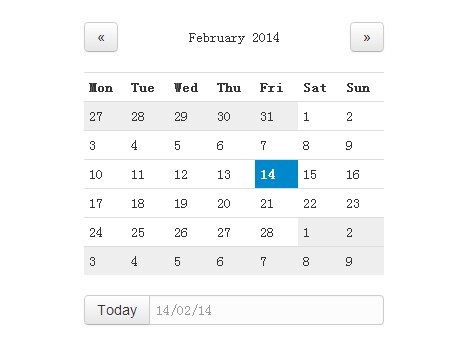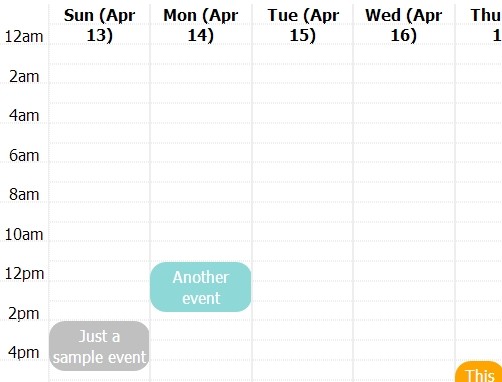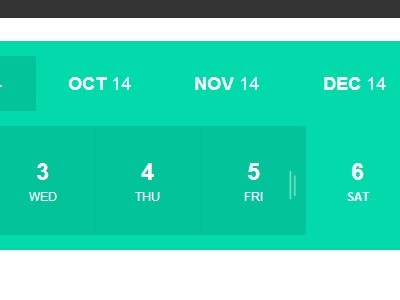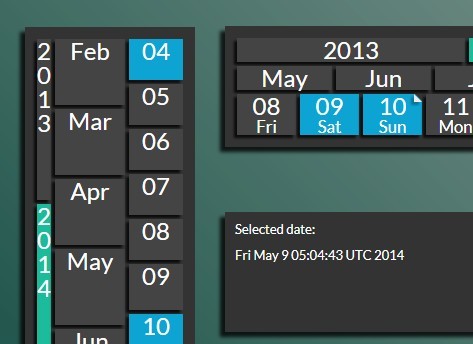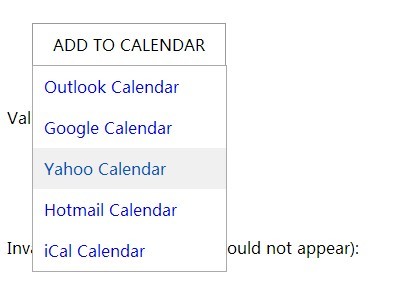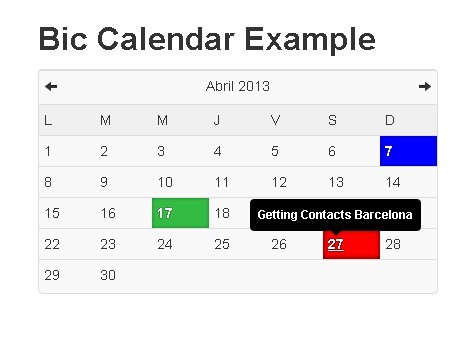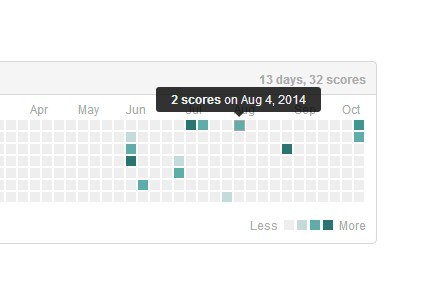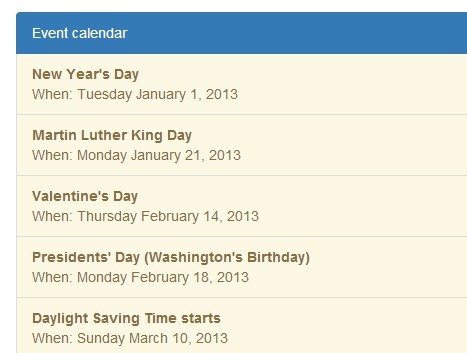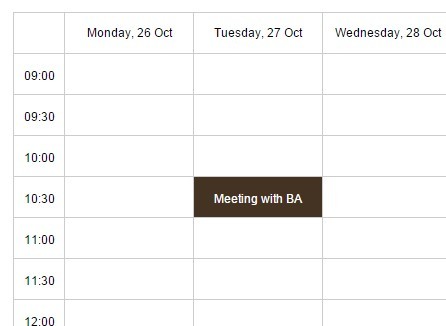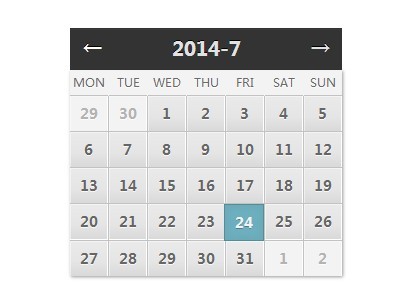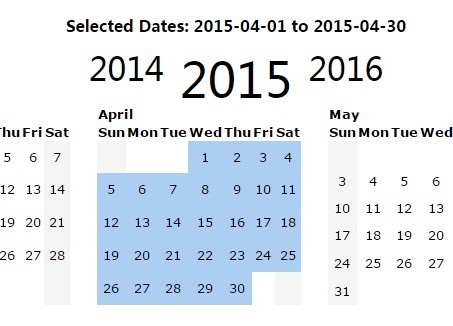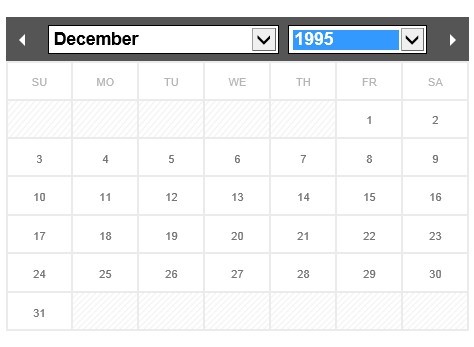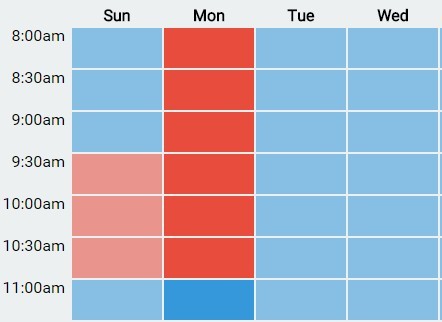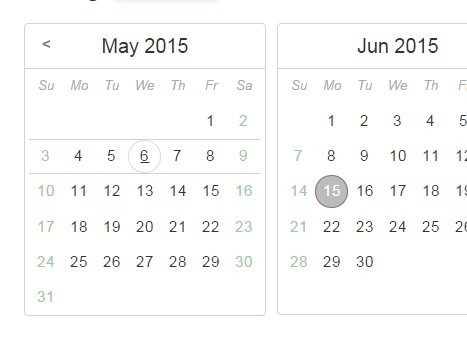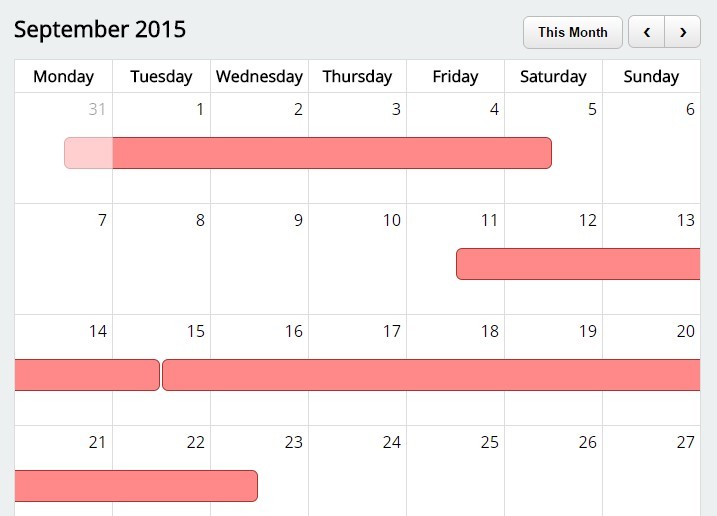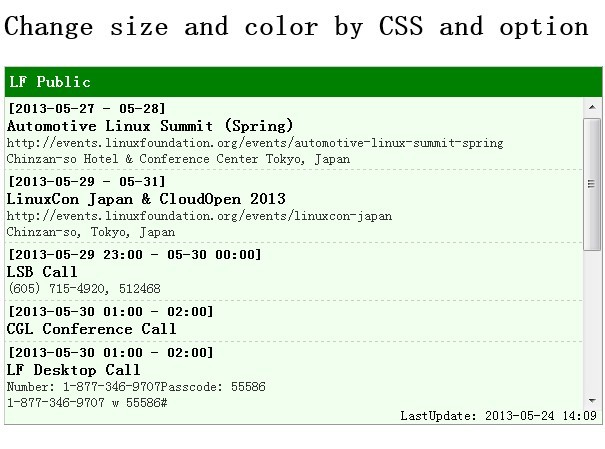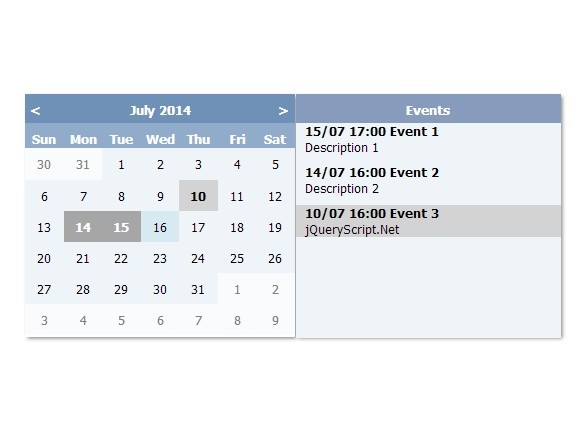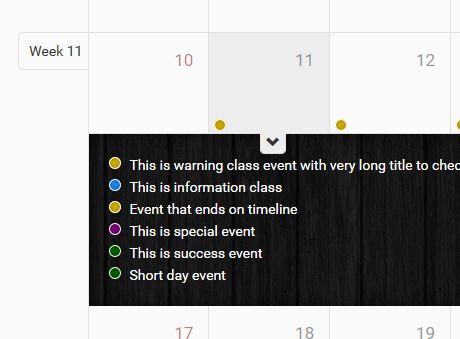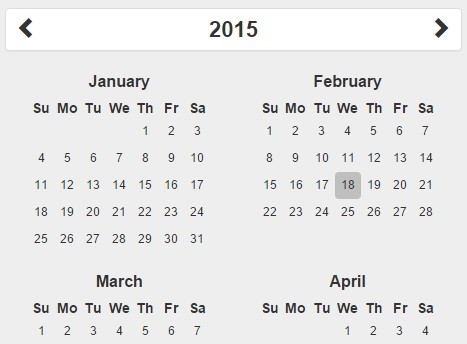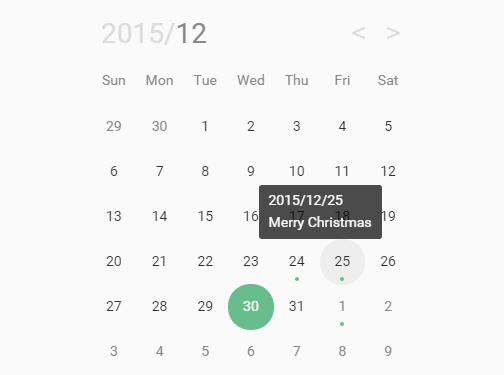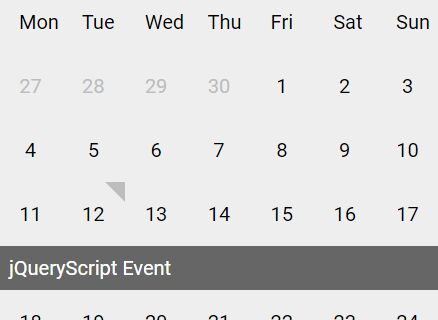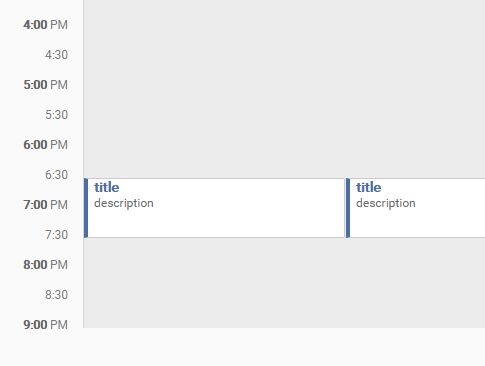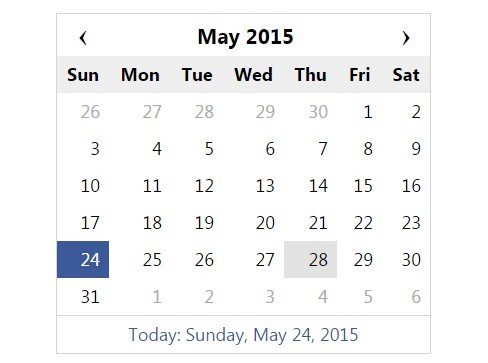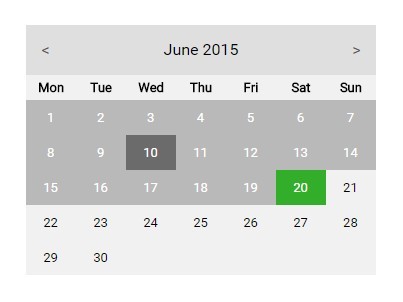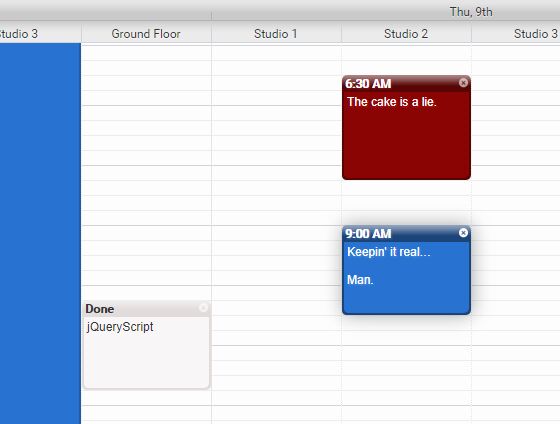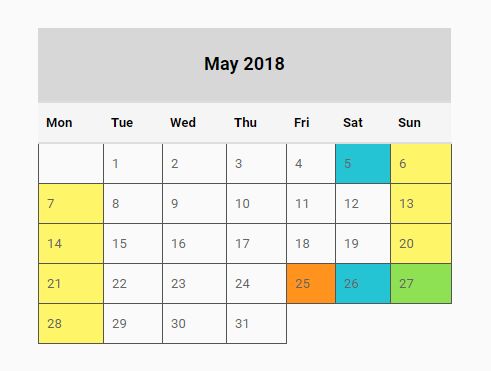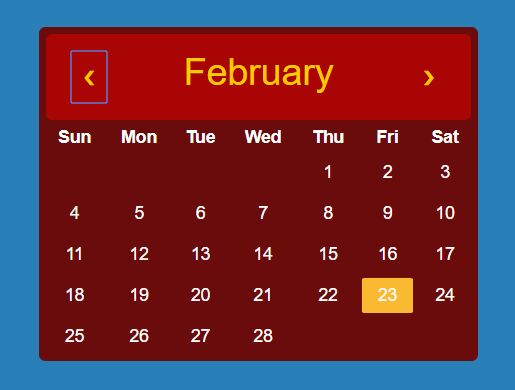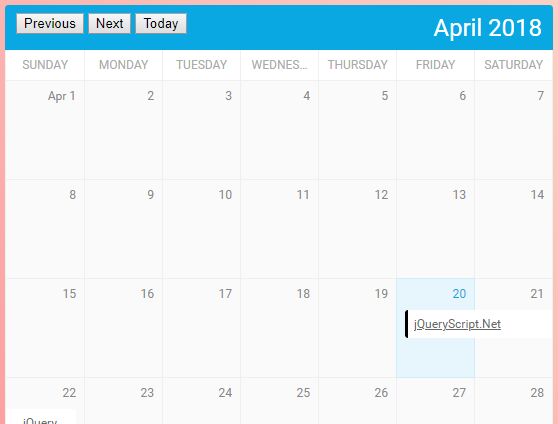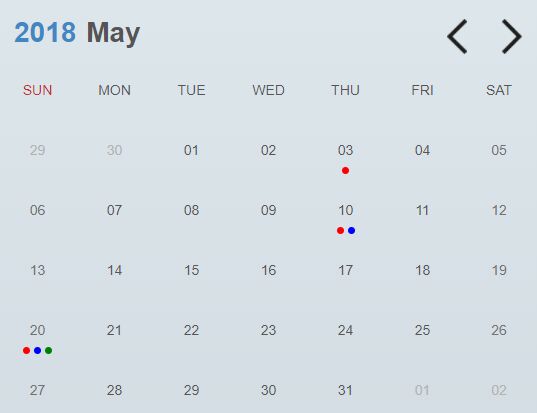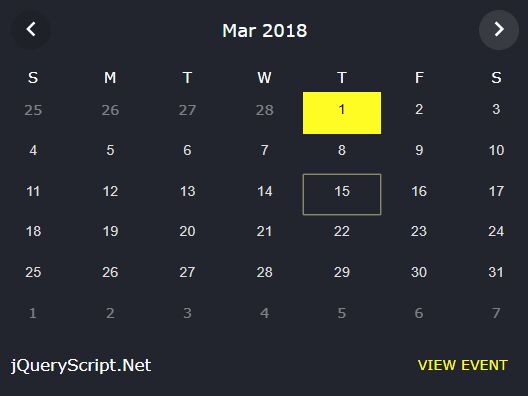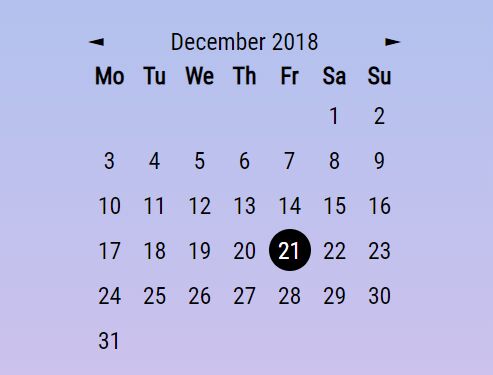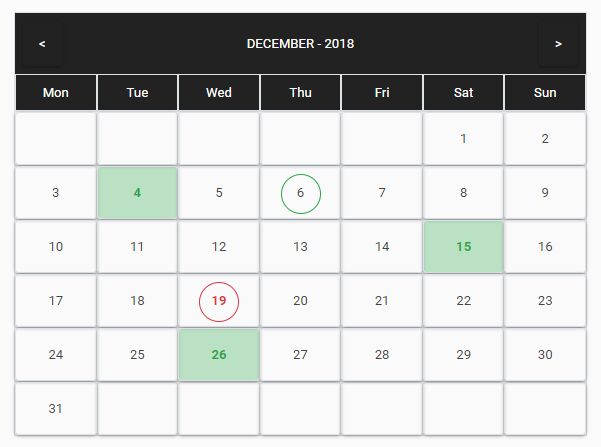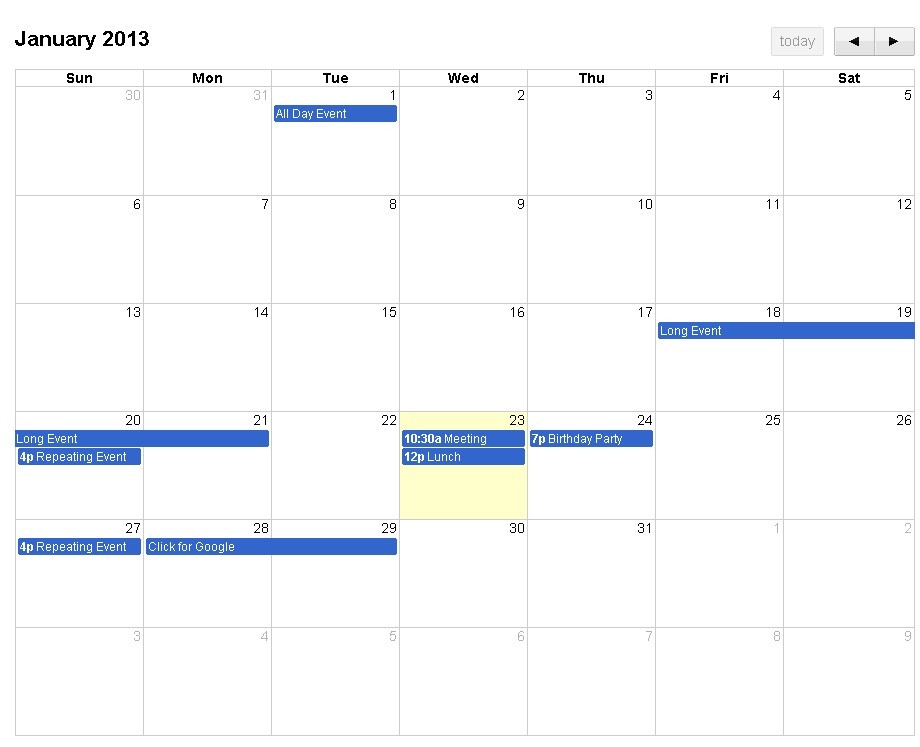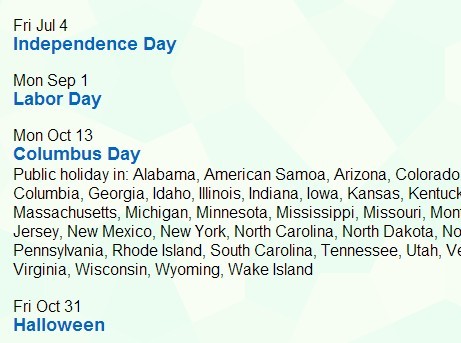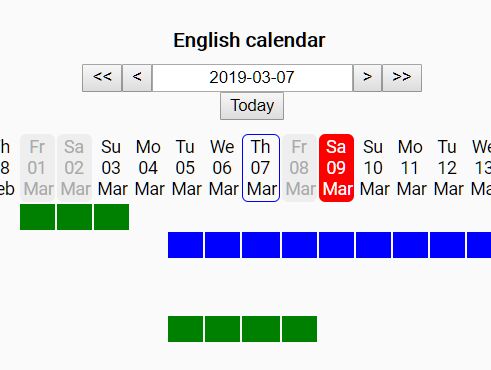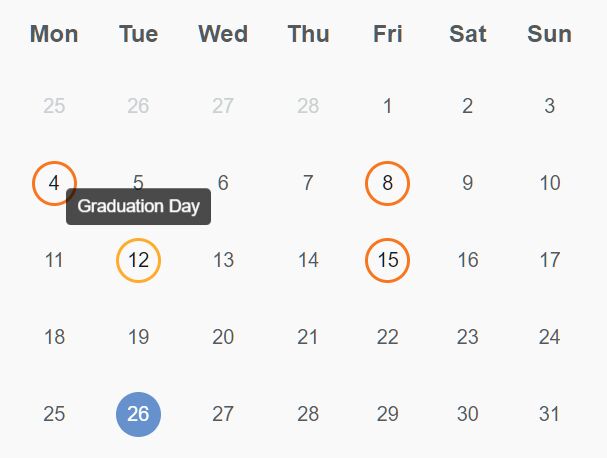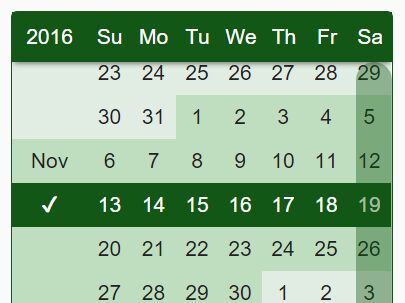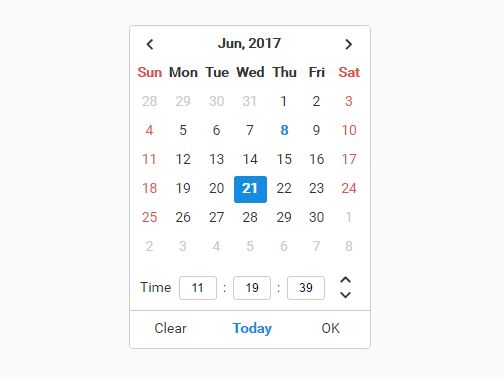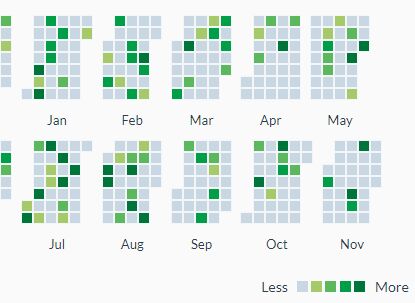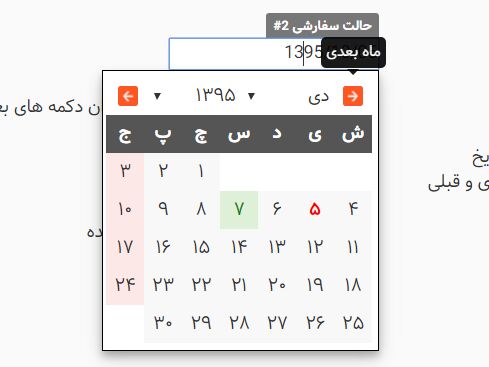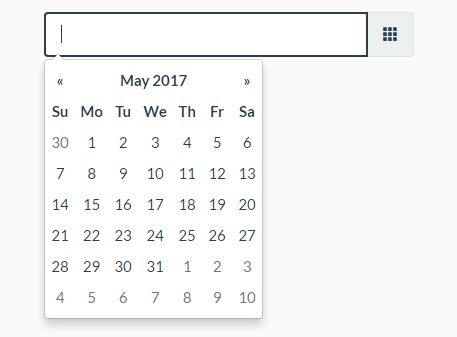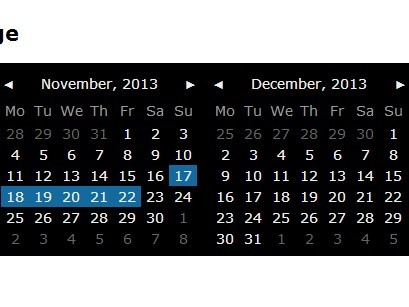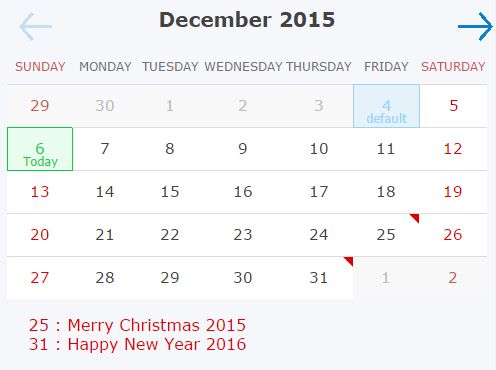jQuery Calendar
A simple lightweight (2.1KB) jQuery plug-in to generate calendars with 8 responsive colour schemes to choose from (or use your own style sheet).
You can pass events using optional parameters.
Usage
Please make sure you have added the the plug-in script include in your page, as well as a copy of jQuery.
<script src="https://ajax.googleapis.com/ajax/libs/jquery/3.2.1/jquery.min.js"></script> <script type="text/javascript" src="js/calendar.min.js"></script>Monday Starting Day - The default behaviour of the calendar is to start each week on SUNDAY. Using a separate JS file for different starting days allows me to keep the file size as small as possible. If you prefer the calendar to use Monday as the starting day, use the included js/calendar-starting-monday.min.js instead. For example:
<script src="https://ajax.googleapis.com/ajax/libs/jquery/3.2.1/jquery.min.js"></script> <script type="text/javascript" src="js/calendar-starting-monday.min.js"></script>You should probably also make sure you include the calendar.css stylesheet, unless you are creating your own stylesheet.
<link rel="stylesheet" type="text/css" href="css/calendar.css">It's really simple to implement a calendar by adding the HTML element to your page and passing the date parameter in a HTML5 data attribute:
<div id="calendar" data-date="2017-01-01"></div>Then define your calendar in your script tag.
$('#calendar').calendar();Optionally, you can pass the date parameter to the function instead of the HTML5 data attribute:
<div id="calendar"></div>Then define your calendar in your script tag.
$('#calendar').calendar({date: '2017-01-01'});You can add the optional parameters by passing a JavaScript object. For example, to generate an 'orange' theme calendar, use the color parameter.
$('#calendar').calendar({color: 'orange'}); /* the default color scheme is Turquoise */ $('#calendar').calendar({color: 'yellow'}); $('#calendar').calendar({color: 'pink'}); $('#calendar').calendar({color: 'purple'}); $('#calendar').calendar({color: 'blue'}); $('#calendar').calendar({color: 'green'}); $('#calendar').calendar({color: 'grey'});Parameter options:
- 'date' - The date of the calendar to be instantiated.
- 'color' - One of the available color schemes: yellow, pink, green, orange, purple, blue, turquoise (default) or none.
- 'months' - Override the Month names i.e January, February, March, April, May, June, July, August, September, October, November, December.
- 'days' - Override the day names i.e Sunday, Monday, Tuesday, Wednesday, Thursday, Friday, Saturday.
- 'daysMin' - Override the day abbreviation i.e. SUN, MON, TUE, WED, THU, FRI, SAT.
- 'dayLetter' - Override the day letter abbreviation i.e. S, M, T, W, T, F, S.
- 'events' - The formatted array of events.
The passed event array must be in the following format:
var events = [ {start: '2017/04/01', end: '2017/04/07', summary: "Example Event", mask: true}, {start: '2017/04/14', end: '2017/04/20', summary: "Example Event #2", mask: true}, {start: '2017/05/05', end: '2017/05/15', summary: "Example Event #3", mask: true} ];Each event must have a start date, end date, summary string and a mask boolean. The mask boolean should be true if you want to 'mask'(block off) event dates, or false.
Please make sure you include the calendar.css style sheet in the head of your page, unless you choose to use your own style declarations.
Requirements
jQuery 1.11.1+
License
Copyright (c) Benjamin Hall, [email protected] https://conobe.co.uk
Licensed under the MIT license
Donate?
If you find this project helpful or useful in anyway, please consider getting me a cup of coffee - It's really appreciated :)
